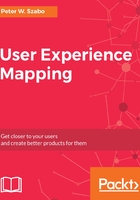
Epics
Epics? No, not the purple drops in World of Warcraft. As I hinted previously, when we discuss project management or user experience, epics are oversized user stories. There is no universal right size standard for stories that all depend on the project and conversation.
Epics are in the way of a good conversation. Make the user stories simpler and conform to the INVEST principles. Breaking down epics can have additional benefits because smaller stories can reveal UX improvement possibilities you didn't think of when you looked at the epic.
After a brief period of panic, we started rethinking the approach. We had to forget the workflow-based approach and started breaking down the epics we had. One of the most stubborn offenders was this user story: I want to add new pages for my site and edit them later. Splitting this into creating a page and editing a page would serve no purpose because the same code would be responsible for creating new pages and editing the existing ones, and both were essential anyhow. The problem arose from the fact that the page could be a contact form, a picture gallery, an article, a blog post, a FAQ item, or many other things. Then, we realized that there is a group of elements that don't depend on the page type. Things such as the URL, the title, the meta description, and the status of the page (published, draft, deleted, and so on). We named them meta elements, although not all of them represent meta tags. This split created the following user story, passing all INVEST criteria: I want to create pages and edit their meta elements. This resulted in a backlog item that our senior Ruby on Rails developer could do in a day. It was testable and immediately usable in production because the early version had a text area below the meta elements, where you could put in any HTML code, which was then rendered below the heading. This text area was obviously replaced in the next iteration, but it was amazing for the Minimum Viable Solution.
The hidden benefit we discovered, when focusing on this user story, was that the user might not want to create the meta elements, so they should all have a default value. Moreover, the values should be linked, unless you broke that link. For example, you typed in the title, and the H1 element and the search engine friendly URL was generated from it:

The image for this case study is published with the blessing and written agreement of Initiale Srl. It shows a pre-alpha gray-on-gray view of the CMS. The UI was Hungarian only at that stage. The white boxes are tutorial messages to help the new user, whereas the light gray areas are the inputs.